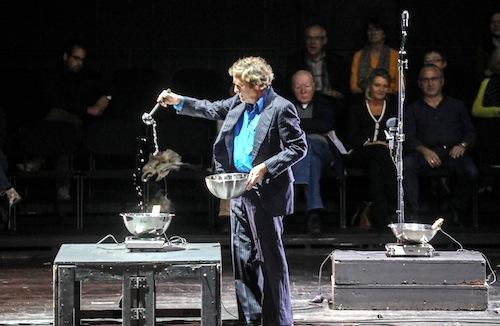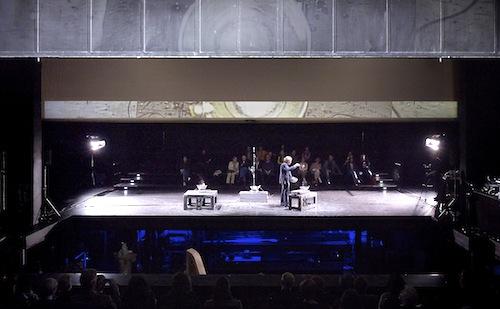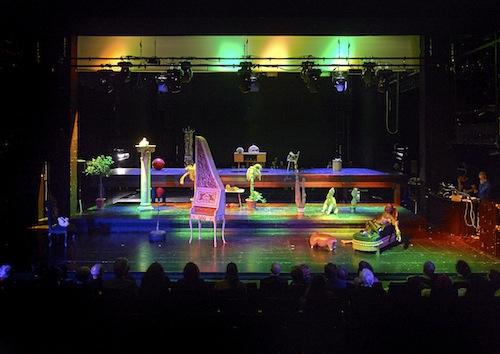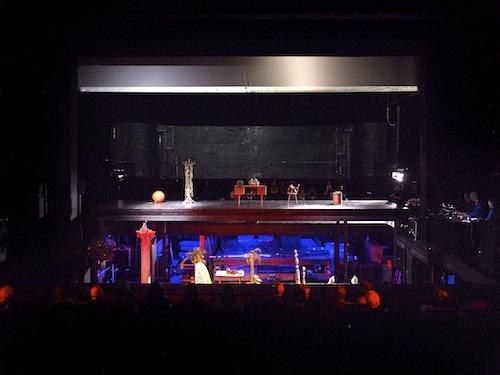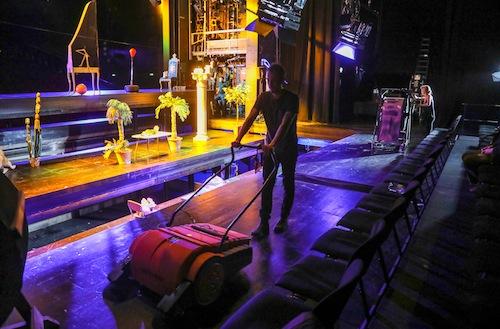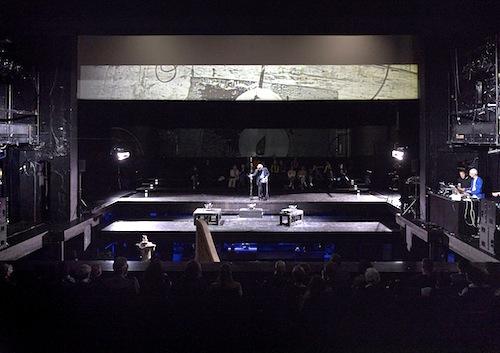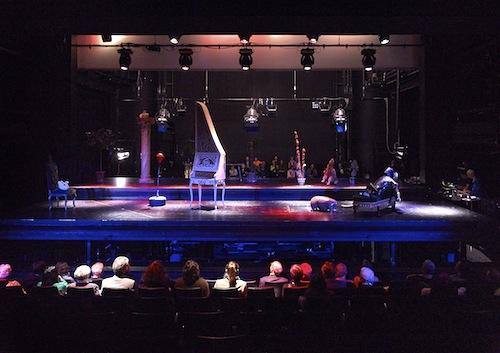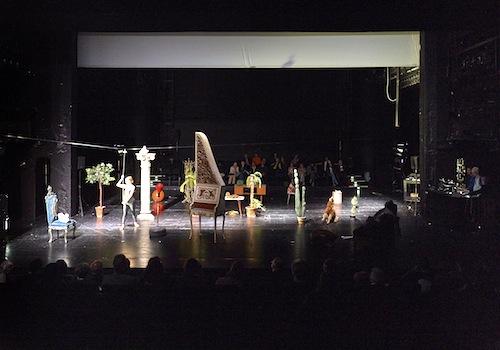Space Becomes The Instrument
Version 2 — Kammerspiele Bonn-Bad Godesberg, October 3, 2016
The theater is turned into an instrument by attaching contact pickups to various moving parts of the stage and lighting system. The theater’s moving stages are mechanicized to move up and down vertically and are normally used for technical purposes – placing or removing stage sets at different times in rehearsal or performance. Since the stages are controlled by computer, as are the various lighting booms and moving, rotating lights, these can be choreographed and amplified, thus allowing the entire building and it’s built-in elements to become an instrument as a whole. Each stage or lighting motor has a contact mic attached to it. These mechanical sounds are manipulated in realtime in a Max/MSP patch and then distributed through an eight channel speaker system.
Meanwhile, the audience perspective is inverted, as half of the audience is positioned behind the stage, and the other half is in front. Additional visual and sounding elements are introduced into the architectural space – a long piano wire, a boiling water sound sculpture, video projection, and mobile sounding stage props. The result is a choreographed sound installation that becomes a sound and movement performance using the architectural elements of the theatrical space. All sounds produced by the choreographed theatrical space are live and nor pre-recorded sounds are used.
Our architectural buildings are acoustical and spatial instruments of sound. Most large buildings are outfitted with mechanical systems and moving parts (air conditioning systems, elevators, mechanical accessories, etc.) that produce sound and vibration. Therefore, the building and its mechanical parts can be orchestrated as an ensemble for performance in realtime. So, the concept that “architecture is frozen music” can be augmented to suggest that architecture can become an instrument in itself, or architecture can produce sound and music.
“Music is liquid architecture, architecture is frozen music”
-Goethe
Sound installation, composition, concept: Gordon Monahan
Set Design: Laura Kikauka
Performers: Gordon Monahan, Grace Monahan, Evan Hathorn, Felix Stadtler, Jan Verbeek
Live sound processing: Noid
Sound technician: Lars Figge
Production Manager, Assistant Dramaturge: Frauke Meyer
Producer, Curator: Carsten Seiffarth
Commissioned by bonn hoeren, a project of the Beethoven Foundation for Art and Culture for the City of Bonn.
Gordon Monahan was Bonn “City Sound Artist” for 2016.
Photos copyright Simon Vogel, Beethovenstiftung/bonn hoeren, 2016, except photos 4, 14, 15, 17, copyright Meike Bölschemeyer, Beethovenstiftung/bonn hoeren, 2016.
